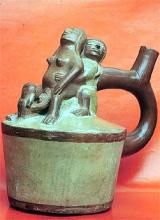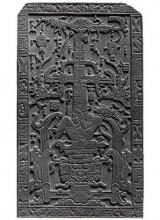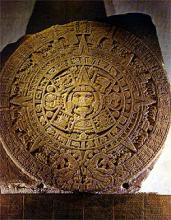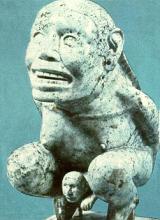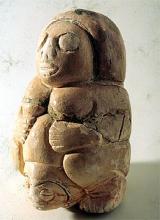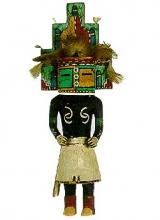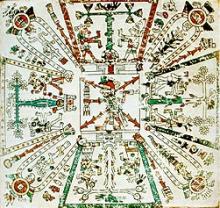Pre-Colombian America
In Pre-Colombian America the Incas gave birth squatting down or sitting in low chairs, as it is seen on ceramic vases that tell the story of those peoples.
The Incas made up part of what was called the Nahua Confederation, that comprised the high lands of Bolivia on both sides of the Andes mountains; their capital was Cuzco, which means navel of the world. By the description that is made of the Sol Inca “mesa” mountain, Cuzco was a cosmopolitan center receiving goods from the Amazon region, the Pacific coast and from the mountains.
On the bas-reliefs of the Maya pyramids you can see the depiction of births, with the women with one foot on the floor and the other knee down.
Their medical knowlege is famous by the sucessful trepanations they performed, astrology taught by the priests (Amautas) with a calender which has such a precision that it is studied until today.
From the Astecs, we have the statue of the Goddness of Birth, Tlazolteol, which is shown in the Collection Robert Wood Bliss, in Washington, DC, giving birth to the god of the corn, Centéotl, squatting down, with the head of the baby appearing at the moment of birth. This goddess represents “the heart of the earth”. Tlazolteol, in Nahua, meant “that which eats the dirt”. The Huaxtecas called her Ixcunan – the goddess of cotton, since they lived from that crop.
Farther into the Andes mountains we find the tropical rain forests Indians that tell the story of the discovery of America as if it were yesterday in the reservations and the most isolated groups. Groups of Indians of the Paraguay river, like the Makãs, give birth like the Egyptians; the Caingangue and the Guaranis give birth squatting down.
The Mbya Indians believe in the reincarnation of the soul. The soul, when it nears reincarnation, elects who will serve as its parents on earth. Many Chaqueña tribes explain faterhood through the belief that creatures are formed from the “sperm” that sprouts from the body, like seeds on earth.
The magic rites change from tribe to tribe. Many have rules for feeding and behaviour that are similiar to other peoples. When the woman is pregnant, certain foods are forbidden because they make labor harder.
The prohibition of sexual contact during pregnancy – like it happens between the Hindus – and in certain cases during breast-feeding, leads to polygamy and, in extreme cases, to infanticite, caused by the fear to lose the husband. In certain tribes when twins are born one must die, because it means bad luck.
The purification of the women after birth is made in isolation. Among the Hebrews, when a boy is born, the woman must not touch kitchen objects for one week and she must not touch sacred objects for 33 days; if it’s a girl, from two weeks to 66 days. Between the Hindus that prohibition lasts for one month.
Licurgo de Castro Santos describes, on his História Geral da Medicina Brasileira, the Indian way to give birth: “Even when pregnant, the native woman used to work all day long on her home tasks, without rest and without trouble in her state. Pregnancy proceeded normally and the birth took place with great naturality, when the first pains came, wherever she was, on the forest gathering wood, by a river, or in the village; she squatted down and the baby came, soon followed by the placenta and a small quantity of blood. The woman herself cut the umbilical cord with a sliver of bamboo”.
This account of the first colonizers is similar to the testimonies we gathered in our trips through the South of Brazil, with the exception that among the Indians, the more aculturated they are, the more they give birth inside their houses and the most complicated are the births. In Mangueirinha we witnessed the intervention of a Paje (sorcerer) in the birth of a child.
“I was in that reservation apllying cancer prevention exams when the medical post’s murse asked me if could help in a delivery of a 20 year old Indian girl, that was having her first child.
With that age, by the Indians the girl was considered already too old to have the first child.
In the morning I went with the nurse, guided by Cretã, the chief, through a way by the forest.
In the darkness of a hut, I found the girl, sitting on the croque (birthing stool). Her labor had started seven hours ago; she was surrounded by worried parents.
I examined her and found the babys head was already elongated by the time it was taking for the birth. On that moment I was seen as the bearer of all the knowledge and hopes.
The girl felt insecure, anxiously looking at the city doctor, making strong efforts.
I tryed to help her in many aways. Im my frustated attempts I discovered how the forceps must have been invented...
I was surrounded with persons and expectations.
I was almost decided to take the girl to a hospital, notwitstanding the difficulties of the way.
On that moment a ragged old man very humbly asked if he could help.
It was the Pajé.
He went outside, took some herbs, made a concoction and gave it to the girl. He sang some songs.
The Indian girl got new forces and in one hour the baby was born in perfect health.
At that moment I saw that even in a prolonged labor nothing bad happened to the baby, because the mother was in the vertical position”.
